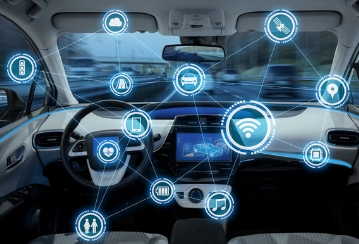Self-Driving Cars - What You Need to Know About the Future of Vehicle Technology

There’s been plenty of buzz over the last few years about the recent advancements in vehicle technology. There have even been some rumours that self-driving cars will start hitting the roads as early as 2019. While some people are hesitant about the future of vehicle technology and what new challenges autonomous vehicles may bring, advanced vehicle technology is working to make transportation safer and more accessible than ever.
Passenger and Pedestrian Safety
Safety remains a top concern in vehicle technology developments. Advancements in safety features are now putting a greater emphasis on preventing auto collisions all together. In fact, most major auto manufacturers are already focusing on implementing collision avoidance systems in their vehicles. Collision avoidance systems include lane departure warnings, automatic emergency braking, forward-collision warnings, blind-spot warnings, traffic-aware cruise control, and smart headlights – as well as the additional safety convenience features of back-up cameras and park assist.
Accessibility and Independent Mobility
Many Canadian seniors – especially those who are living with visual impairments, or other physical or mental difficulties – are unable to independently drive from one point to another. This means that many seniors are often relying on public transit, family and friends, or government and nonprofit services to help them get where they need to go. Public transit, however, is not always reliable – especially for those living in more remote areas – and government and nonprofit services are often accompanied with passenger backlogs and waitlists.
The introduction of self-driving vehicles could be the solution to independent mobility, especially as vehicle technology continues to improve. Advancements in machine learning and artificial intelligence are working towards improving opportunities for communication between passengers and autonomous vehicles. Soon, autonomous vehicles will be able to understand spoken commands, make real-time observations of nearby surroundings, and provide practical assistance to accommodate the accessibility needs of each unique passenger.
Driverless Shuttle Services
Michigan recently implemented a driverless shuttle service on the University of Michigan campus to gauge how passengers react to autonomous vehicles. The purpose of the project is to advise researchers on potential improvements for the autonomous shuttles, and to learn how to build up passenger trust over time.
The 11-passenger all-electric shuttles rely on GPS for localization and a lidar detection system that uses invisible laser beams to construct a view of the shuttle’s surrounding environment. Once approved, the shuttles will be used in an attempt to solve the “last mile” problem – assisting passengers who live outside of conventional transit zones with transport to and from public transit hubs. The driverless shuttle project is set to launch in Toronto in 2020.1
As we get closer to the time when fully autonomous vehicles will be introduced to the market, the conversations surrounding safety, insurance and the regulation of these vehicles will surely intensify. Be sure to keep up with the conversation to learn how further advancements in vehicle technology may impact you and your insurance coverage. If you have any questions or would like to learn more, contact an OTIP insurance broker at 1-888-892-4935.